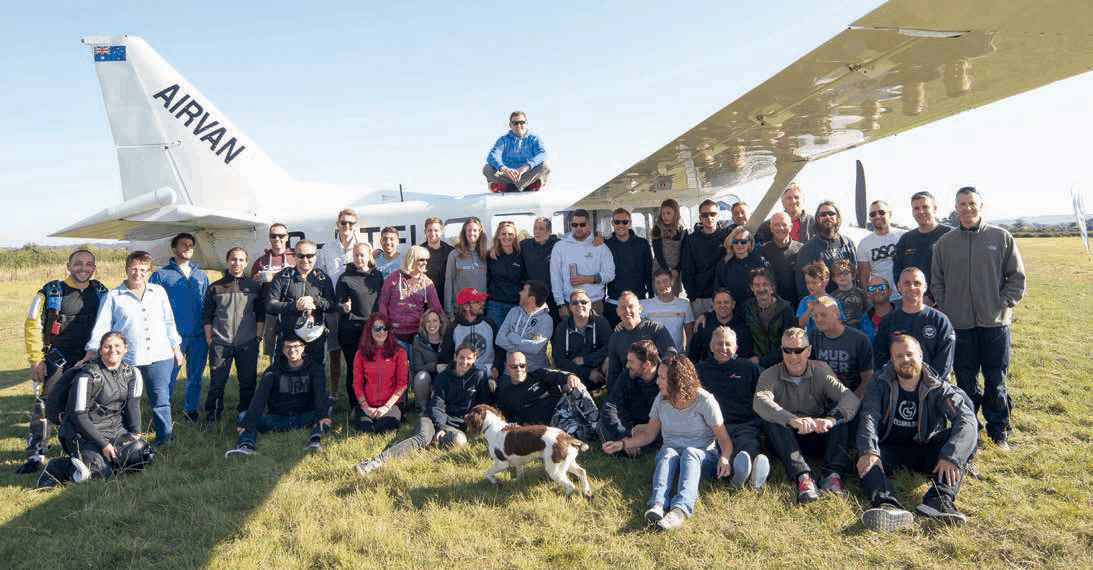Because Safety Culture Extends To the Tube
By Will Bond
Images courtesy of iFLY Indoor Skydiving UK
The IBA celebrated its 20th birthday last year. Crazy, right? For all those years, the IBA was offered free to all members, even as the community grew from dozens to hundreds to thousands. Today, there are 90 facilities worldwide. That’s a lot of airflow and a lot of responsibility.
Today, I want to talk about how we’re all sharing that responsibility—as flyers.
The IBA’s obligatory skill-tracking system (and the small annual fee for IBA membership) caught a lot of people off-guard when it came out. As an IBA instructor, I saw a lot of the frustration directed towards it from the front lines, but I’m also in the position of witnessing, also from the front lines, why the IBA introduced the program. I also see, every day, what the IBA’s stronger, better-resourced, more standardised system means for our sport.
I’d like to share my observations with you in the hopes that it’ll help to demonstrate the way this system helps all flyers get closer to mastery and stay safer along the way. I promise you that as tunnel instructors, we are here to help, not hinder; unfortunately, we have seen our fair share of gnarly incidents, the kind of season-ending (or worse) crashes that this system is working really hard to prevent.

The system keeps you honest (and the honest path is the only way towards mastery, anyway)
You need a logbook for your tunnel flying. Really, you do.
Not many flyers, aside from those of us that spend our working lives in the tube, perhaps, have an ironclad memory of exactly what happened last time we were flying. It’s not uncommon to have an all-too-vague memory of when exactly it was that we were last poking our helmet through the door. Four months? Six? Sometime last winter?
The IBA online logbook provides a tunnel-specific tool to keep track of the tunnel time you’ve racked up, the dates you’ve flown, the people you’ve flown with and the hard work that you’ve put in along the way.
The system takes the pressure off you to communicate your skills clearly to a new instructor
Some flyers are put off that the logbook is a requirement to fly at IBA tunnels. Hear me out: it’s a feature that’s very much to your benefit, not a lead balloon. It keeps track of what you have shown an instructor that you can actually do, instead of what you think you can do or what you manage to extemporaneously blurt out about your skills under the pressure of the question.
Answering questions about your flying can be awkward. The tendency is usually to answer with over or under confidence, which reliably wastes everyone’s time as your instructor then has to get you to demonstrate where your skills really are.
Great resources for learning have previously been hard to come by
If you’ve ever looked around for great resources to help you learn how to be a more skilful tunnel monkey, you might have noticed how very thin on the ground they have been in years past.
The IBA has been working hard to change that by pouring a lot of effort and investment into developing resources around how to fly, and coach, in the tunnel environment. We’re at the point of maturity in the sport where we know what the path to mastery looks like and these resources are meant to light that path.
The IBA draws a clean line between the tunnel and the sky
You might be surprised by how often I hear flyers conflate the indoor and outdoor environments. ‘I can do it in the sky,’ they’ll say. Therefore, I should be allowed to just send it in the tunnel.
It’s ironic, of course, because flyers with a lot of experience in both environments won’t make statements like that. If you flip the statement and look at it the other way around, it doesn’t make any sense, right? Example: if I can personally fly and coach all orientations in the tunnel, does that mean I should market myself as a sky coach without the required jumps?
We have walls in the tunnel, reference points, a set wind speed and a much longer time to feel the wind. The two sports share just enough context to make them mutually meaningful, but not enough for expertise in one to quantify safety in the other.
I have flown with countless people both in the sky and in the tunnel. In my personal experience, as soon as you constrict the space available, skill goes down, everything has to be very precise. In the sky, a metre is the difference from being in the centre of a shot or just off-centre; in the tunnel, it’s the difference between flying a gorgeous line and breaking an ankle on the net or tracking into the wall at concussion speed.
Your safety, and the safety of the friends you fly with, depends on us all stepping up
The IBA’s goal is to give the tunnel the infrastructure for a safety culture. An infrastructure that rhymes with the set of parameters and protocols that parachuting organisations all over the world have spent the last 75 years or so setting for the sky.
With growing scale comes growing responsibility. We’re seeing more accidents in the tunnel, some of which have been tragic. As is true in any sport that involves risk, accidents will happen, but many accidents are very preventable. The IBA seeks to make sure we have the data to figure out what went wrong. Even more importantly, it seeks to discover how we can prevent such a thing from happening in the future. (Every injury or near miss is sent off to the IBA Safety Team for analysis and has a direct effect on the safety and training notices that get sent out to tunnel teams all around the world.)

So, what does this all mean for you?
If you fly at an IBA tunnel, you already have step one taken care of: your membership and your login. If not, no worries: just register here.
From there, here’s your checklist:
- Log in to make sure your membership is current and in good standing. (Doing this from the comfort of your own home will save both time and frustration in the tunnel lobby.)
- Make sure your skill logbook is up to date with sign-offs for all the tunnel skills you can currently fly. (If you know you can fly a skill but don’t have an official sign-off for it, simply book some time and let the instructor know that you need to get your skills signed off. If you’ve flown abroad recently and can demonstrate videos of your flying, that documentation will be helpful for us to get you signed off as quickly as possible.)
- If you are inactive due to uncurrency, that is to say, that you haven’t logged any time in the last 180 days, book in a couple of minutes to do a recurrency flight with an instructor to ease back into the airflow.
- After each flight, update your online IBA logbook in the same way that you update your logbook for the sky.
- Keep your skills up to date. Take the initiative to ask for sign-off after each new skill you master.





